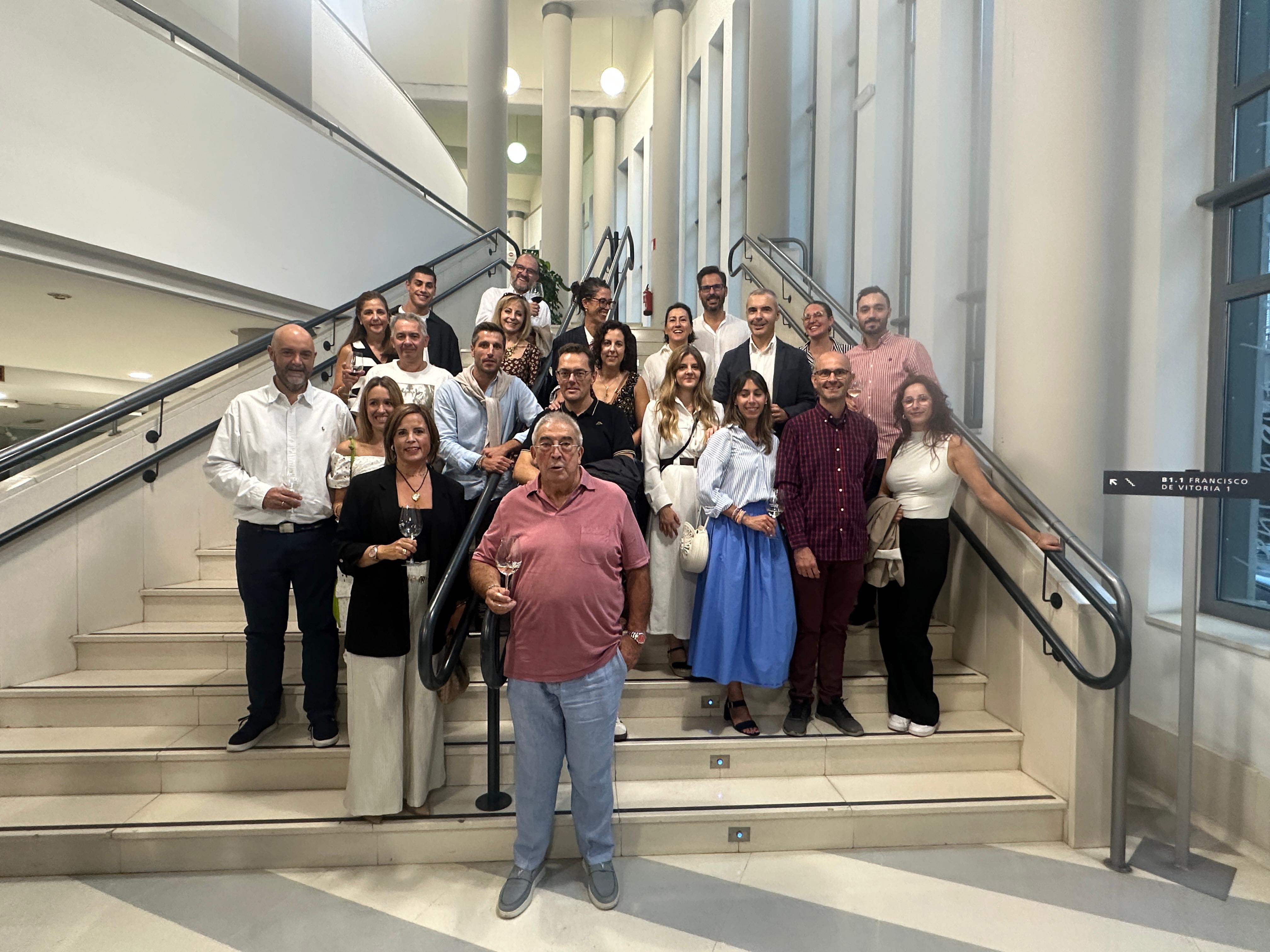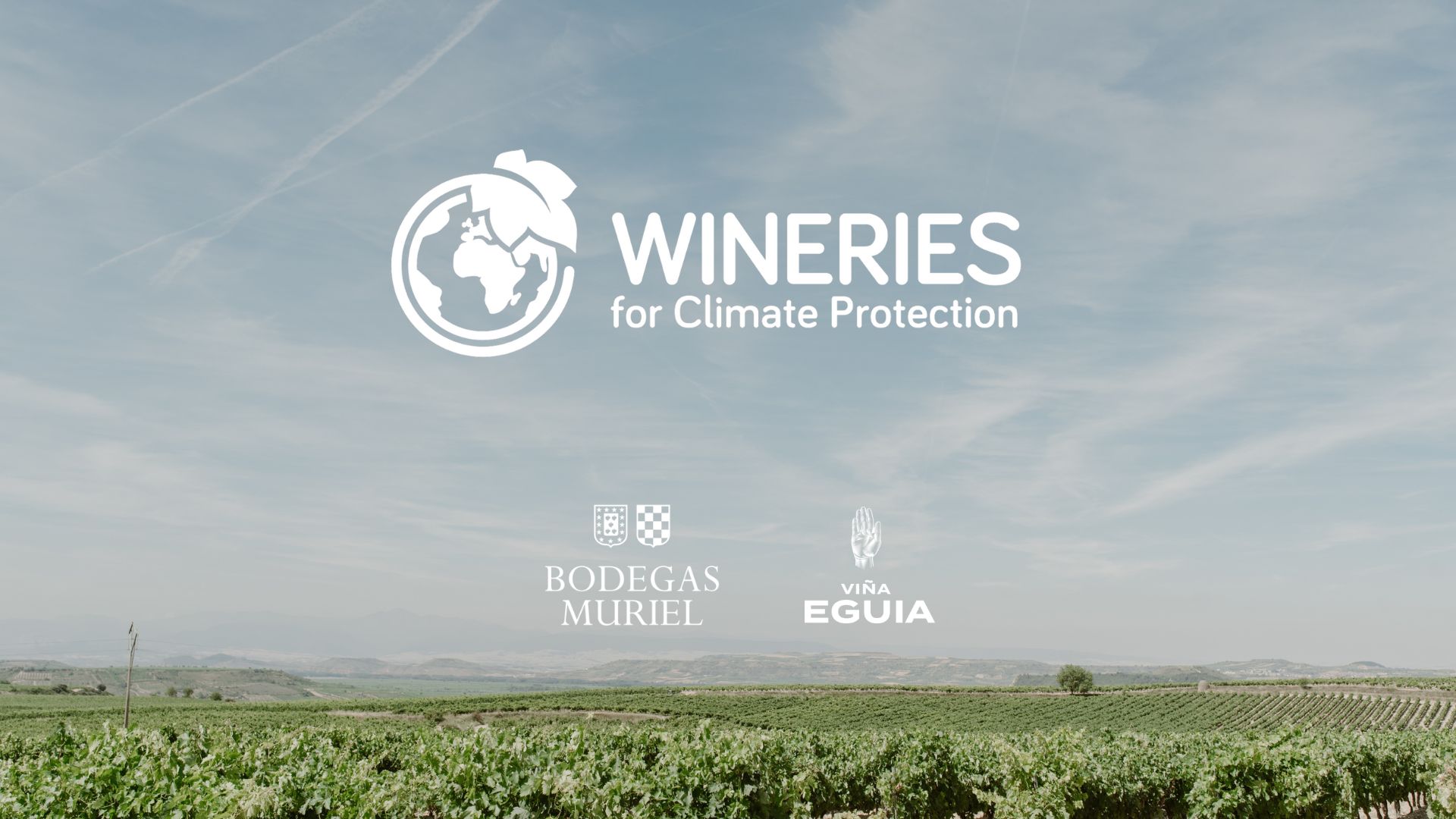Breathtaking views
Perched on a limestone platform above small plots of old vines, the lagar commands an impressive panoramic view of the entire Ebro river valley in Rioja. Across the other side, the Demanda mountain range is silhouetted against the horizon. The distinctive pyramid-shaped summit of San Lorenzo, the highest peak in La Rioja, was covered with snow on March 8th.
The lookout effect may have played an important role in the preservation of the Santurnia wine press. Since it ceased to be used for this purpose sometime in the 15th or 16th centuries, it must have become a privileged vantage point for observation and surveillance.

Time travel
Let us imagine this territory 700 years ago. The surrounding farmland would not have been too different from what it is today. A succession of small vineyards probably covered the hillsides, bridging ravines and small gullies. The primitive Gothic bell tower in Labastida would have loomed over the eastern slope. The locals, both in this village and in Briñas, had been farming vines for decades. The climate worked in their favour, as the cooler regions further north had seen how their vineyards, which had previously surrounded towns such as Vitoria and Salvatierra, had been wiped out, while viticulture on the warmer, sunnier slopes of the Sonsierra had flourished. There was another crucial factor: the development of the wine trade. The Castilian crown opened the gates of Vitoria ?and later of other Basque towns as well? to Rioja wines.
Grape-growing and winemaking expanded. Across the territory, wine presses were built on the bedrock of the region's soils in response to the needs to make wine quickly right on the vineyards. Demand grew every year and there was no time to lose. After treading the grapes in the press, the must was carried in wineskins to ferment in the village homes. In the course of a few days, the resulting wine was ready for the traviesa, the journey by mule and horse, up the mountain passes, from the Rioja countryside to the towns further north.
According to the scholar Miguel Larreina, the proliferation of these lagares might also be explained by the fact that Rioja Alavesa was a bordering region. The frequent conflicts between the medieval kingdoms of Navarre and Castile discouraged the construction of infrastructures that could be easily destroyed. Obviously, this was not the case of ancient lagares ?as they were made of stone, their permanence was guaranteed. The lever beam and other wooden parts could indeed be burnt, but they could be easily replaced.
Imagining the lagar in operation
Nowadays, the Santurnia wine press is signposted and exhibits some panels describing its use and history. It is interesting to understand how the old machines must have worked, with their porticoes and braces, their spindles and counterweights. One can also imagine how the wine flowed through the channels and basins to the trough. The winemaking practices, even the varieties, were different from those of today, but the wine made in Santurnia, in the open air, surely had a family feel to it, a set of nuances whose influence can be still be felt in our Conde de los Andes wine.

 "
"
You may also be interested in:




